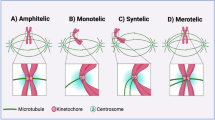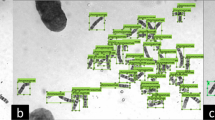Abstract
THE unsolved question of the source of many human congenital anomalies has recently received great impetus from the cytological aspect. This is largely due to an improved chromosome spreading technique which led to the establishment of the correct chromosome number in man1. Further evidence that a change in chromosome number was responsible for the phenotypic expression of certain clinical entities2 stimulated the application of this approach to cases of cerebral palsy of unknown or so-called developmental etiology.
This is a preview of subscription content, access via your institution
Access options
Subscribe to this journal
Receive 51 print issues and online access
$199.00 per year
only $3.90 per issue
Buy this article
- Purchase on SpringerLink
- Instant access to full article PDF
Prices may be subject to local taxes which are calculated during checkout
Similar content being viewed by others
References
Tjio, J. H., and Levan, A., Hereditas, 42, 1 (1956). Ford, C. E., and Hamerton, J. L., Nature, 178, 1020 (1956).
Ford, C. E., et al., Nature, 183, 1030 (1959). Sasaki, M., and Makino, S., Texas Rep. Biol. and Med., 18, 493 (1960).
Blumel, J., et al., A.M.A. Arch. Ophth., 63, 246 (1960).
Hungerford, D. A., et al., Amer. J. Human Genetics, 11, 215 (1959).
Author information
Authors and Affiliations
Rights and permissions
About this article
Cite this article
BLUMEL, J., OHNUKI, Y. & AWA, A. Chromosome Anomaly in Two Cases of Cerebral Palsy, a Brother and a Sister. Nature 189, 154–155 (1961). https://doi.org/10.1038/189154a0
Issue date:
DOI: https://doi.org/10.1038/189154a0



